What a query, you might think. And, indeed, most Macfilos readers will answer the question if we still need cameras with a firm yes. But if you look at market data and observe people around you, some doubt might arise. So, what justification have dedicated cameras for photography today?
The figures are sobering. The camera market is shrinking at a pace nobody would have expected. This happens worldwide, and even the emergence of strong middle classes in big nations such as China, India or Brazil seems not to change this. Probably because they, in general, may have other needs or interests than a camera.
A market, silently imploding
The figures for Germany alone are remarkable. In 2007, when digital photography had become mainstream and the first iPhone was released, Europe’s most important market recorded 8.8 million sold cameras, as a brochure for the photokina (another word from the good old times) stated in 2008[1]. Ten years later, the number had fallen to 2.66 million. In 2020, it was a mere 1.57 million, as these figures are showing[2]. 2021 saw no turnaround according to consistent reports from traders and industry experts. Things aren’t going well.
In worldwide numbers, 2021 was under the level of 2000 with a total of 8.36 million sold cameras (CIPA members only). At the pinnacle in 2010, the figure was 121.46 million. The market has lost more than 90 per cent in terms of sold cameras within a decade according to CIPA data[3]. And it is only thanks to the trend towards ever higher-priced cameras (or the literal death of low-priced models) that sales have not collapsed to the same extent.
A contender becomes dominant
At the same time, smartphones have become ever more capable. As noted, the iPhone started the revolution in 2007, and within a few years, the multi-functional cellphone with a camera as one of its characteristic features became a standard tool for billions of people. In Germany, 22.5 million smartphones were sold in 2020, a constant number over the last years. That means that for every camera sold, there are more than 14 new smartphones. And their cameras are getting better and better – more megapixels, different focal lengths, better high-ISO capabilities.
So again, do we still need cameras (beyond their attraction as collectors’ items, an aspect which I leave aside in this article)? Four thoughts.
1 What do we use? Conscious choice of tools
When you are setting out to practice photography as an amateur, this is a deliberate decision. Sure, you often take your camera with you just in case your core activity offers some opportunities to take some good photos. But even then, you make an active choice to take a camera (as opposed to having your smartphone always with you, because you might need it for such crazy things as making a phone call). So the creative process starts with the reflection of what gear you might need or you might want to use. Big kit or small kit, long or short focal lengths, you name it.
For this conscious work with your equipment, it seems essential that you perceive your cameras and lenses as being tools. Packing your bag, you are anticipating what you might encounter during your photography session. And this is not only true for professionals (many of whom do not take images in their leisure time) but also for amateurs. A smartphone that you have always with you anyway allows no such choice of gear. So, the moment of planning will not take place either.
An arsenal of cameras and/or lenses alone makes nobody a good photographer, for sure. But if you have a conscious approach to your equipment, you deal with photography on a different level. I think that alone justifies the existence of purpose-built cameras and all the accessories that go with them. From my point of view, it makes a huge difference whether you hold a multifunctional mini-computer in your hands or a device with which you can do exactly one thing.
2 How do we shoot? Composing pictures or making snapshots
Speaking of making deliberate decisions, this of course not only applies to the somewhat marginal question of what gear you use. Far more important is the question of what you shoot and how you shoot. For snapshots, the easiest possible workflow is the best. This is why point-and-shoot cameras always had the most automatic functions, why they were always built with the aim of the easiest possible handling, and why they were designed to be so small that you could take them everywhere (ironically, the Leica checked all these boxes back in 1925, given the then competition). Today, even the cheapest smartphone meets all these requirements.
If you want to take snapshots, a smartphone is a perfect device. You can also use it to compose an image to artistic standards. But even the latest and the greatest Apple, Samsung or XYZ products will limit their users in their creative options. Your choice of angles of view is restricted, playing with the optical laws of depth of field (something that lies in the nature of photography, because the human eye does not know this phenomenon in this form) is only possible with computational imaging and therefore artificial in a special way.
Again, a tool that is made solely for taking pictures forces you to concentrate on the process of making pictures. A viewfinder lets you see the world in a special way (depending on the equipment you use), and holding your camera to your eye makes it an extension of your organ of sight. I am sure this makes a change to the act of depicting the world. If you have a certain ambition, in this strive to depict the world, a real camera might be exactly what you need, what triggers your creativity or just enhances your confidence and fun.
3 What do we get? Output and outcome questions
Apropos creativity. Again, a good camera does not make a good photographer. But I think that a tool that you deliberately chose, that you like, that you are probably even proud of, will see more use and more engagement. And more taken images will likely lead to get more good pictures (whatever “good” is — let’s say, individually satisfying pictures). High output does not automatically mean a good outcome, of course. If this were true, hundreds of millions of excellent smartphone images per day would come into being. But I want to make a claim that it does make a difference how you are actually using your image-recording device and what character it has.
This rather psychological aspect aside, a purpose-built camera has a superior outcome in terms of image quality. Smartphone images are computed to look fine on the (often astonishingly good) screens of smartphones. Rightly so, as the overwhelming majority of these images will never leave the smartphone ecosystem. Once you try to have such a photo printed to a substantial size, you are likely to be disappointed. Not much to be seen of your 12 or 20 megapixels on a modest 8×10 inch print. The extreme miniaturization and the enormous density of pixels on the small sensor are taking their toll.
So, if one needs or wishes images that work beyond a smartphone screen, social media or the occasional publication on an internet site, one might feel the need for a dedicated camera. Sure, an increasing number of journalists, artists and so-called content creators are relying on smartphones — for the moment, mainly for video footage, but ever more frequently for photos, too. But this is not necessarily proof that cameras are no longer needed. It could as well have something to do with the wish for cheaper productions and lower quality standards.
4. What’s next? Future scenarios
With smartphones constantly improving their photographic capabilities, there is no reason to believe that point-and-shoot cameras have any future. Or that a substantial number of customers who just want to point and shoot would go for a device other than a smartphone. Furthermore, artificial intelligence will allow smartphones to enter the fields so far reserved to serious cameras. Shallow depth of field for portraits and ultra-wide angle perspective is already available thanks to computational imaging. More new achievements will follow.
One scenario is therefore that smartphones will become entirely dominant and that even professional photographers will use them in greater numbers. Because it’s easy, fast, cheap and unobtrusive. And it is so incredibly easy to post-process, share, and publish your images right from your phone.
Another scenario is that the remaining cameras will become more and more similar to smartphones. Zeiss had no success with their revolutionary ZX-1 which is more or less such a product. But other manufacturers might well make similar attempts. If only to address the generation of smartphone natives. For them, connectivity is probably more important than the last quantum of optical perfection.
A third scenario assumes that the further innovation dynamics on the camera sector are rapidly slowing down due to lack of R&D capital. All major manufacturers have invested enormous sums in their new mirrorless systems, including some very sophisticated lenses. With sales staying low, even price increases will not compensate for market shrinkage. Consequently, innovation cycles could become much longer because marginal utility gets more and more expensive to achieve.
Scenario number four is similar and different at the same time: Often we read that 18, 24 or 47 megapixels or 3,200, 25,600 or 100,000 ISO were the culmination point and that we now have all that we need. This assumption has been wrong every time so far — because the industry is forced into bringing ever new features to keep the system running. So, there is some likelihood that we will, in the higher-end sector, see no full market saturation in the foreseeable future. Needless to say that anything else would cause a disastrous chain reaction for the whole industry.
Other scenarios are possible for sure and might come true. Discuss in the comments section!
Conclusion
So, to pick up the question in the title, do we still need cameras? It depends on what “we” represents. If “we” means our society, the answer is no. The vast majority of people who want to take pictures are doing this without a dedicated camera already. This seems to be true for all age groups, so demography will not help. If “we” means a community of pros and committed amateurs (and this group might well grow among younger generations), the answer is a firm yes. We need cameras because we love them — frequently as creative tools, sometimes as fascinating toys and always as the still best prerequisite for outstanding results.
What do you think? What is the outlook for the camera as we know it? Will future cameras be radically different? Or will smartphones take over the photography market leaving just a few amateurs to be the last customers of the formerly so proud camera industry? Which innovations do you hope for and which are you afraid of? Or are you simply settled knowing that you have already acquired your last camera? Let’s discuss it in the comments section – I’m really curious what your opinion is.
[1] https://www.piv-imaging.com/files/409/Trends-Photo-Imagingmarkt-2008.pdf
[2] https://www.matthiashaltenhof.de/blog/kamera-statistiken/
[3] https://de.statista.com/statistik/daten/studie/30713/umfrage/ausgelieferte-digitalkameras-durch-cipa-unternehmen-seit-1999/
Want to contribute an article to Macfilos? It’s easy. Just click the “Write for Us” button. We’ll help with the writing and guide you through the process.

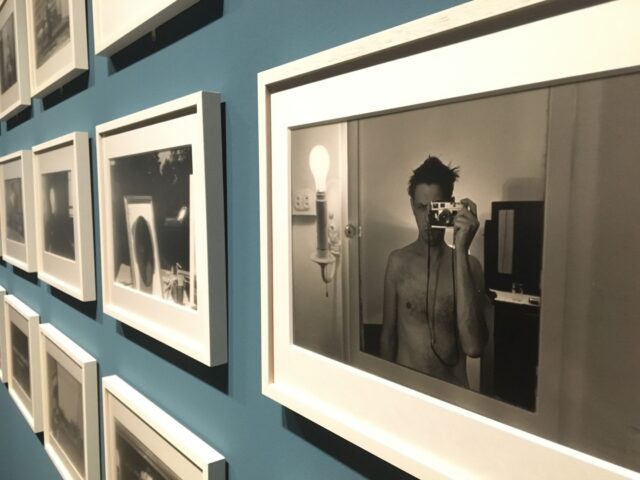

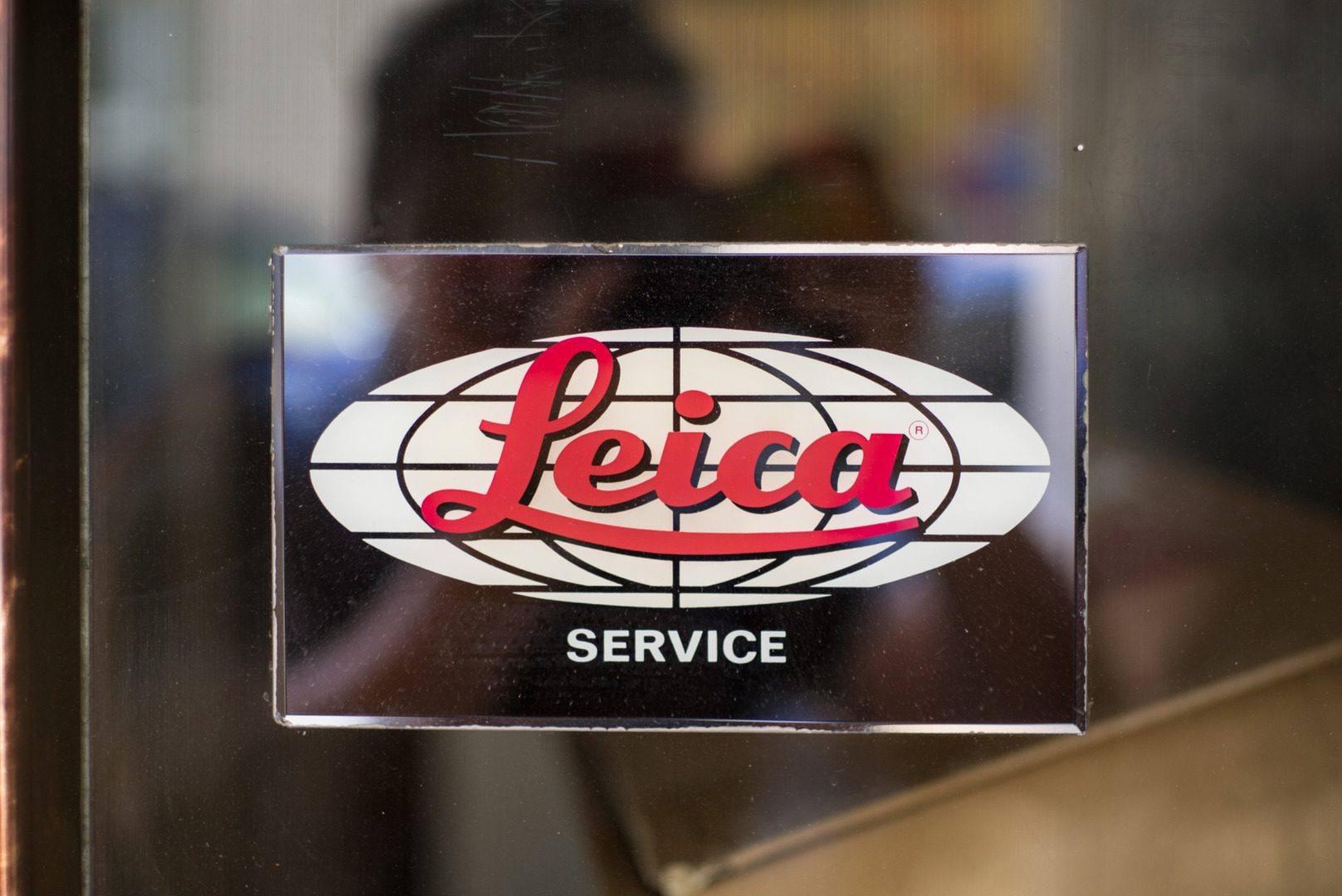
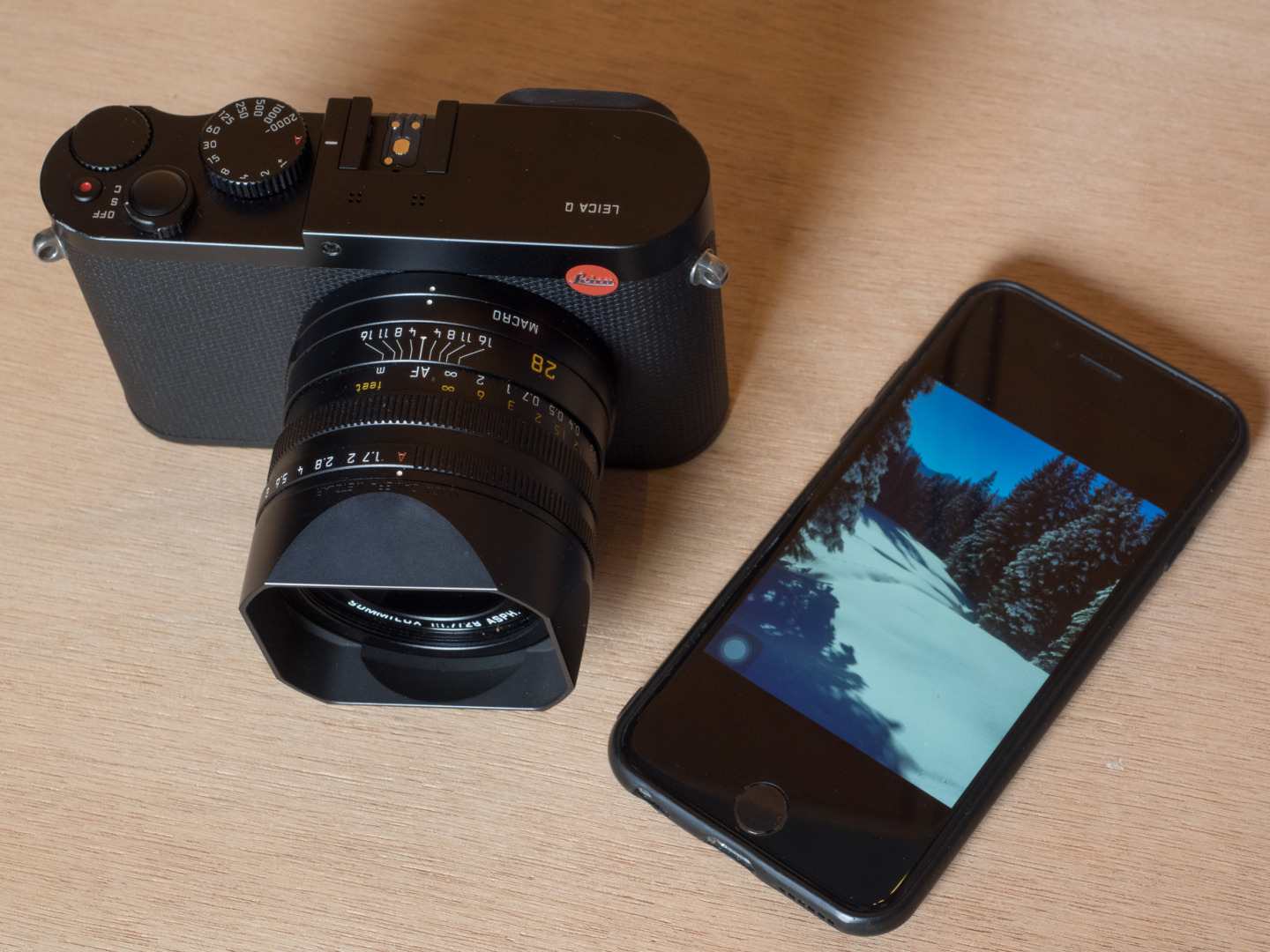
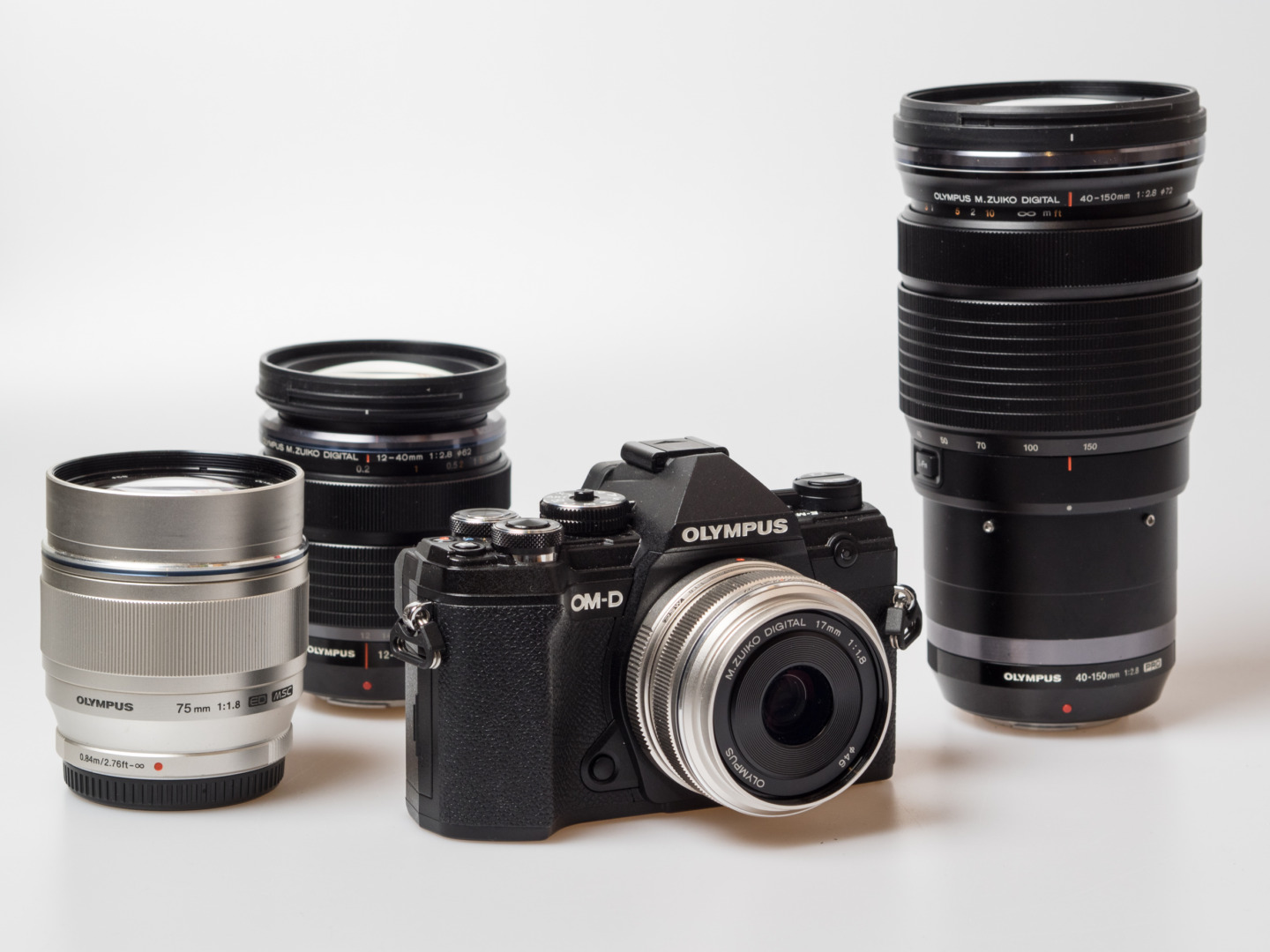
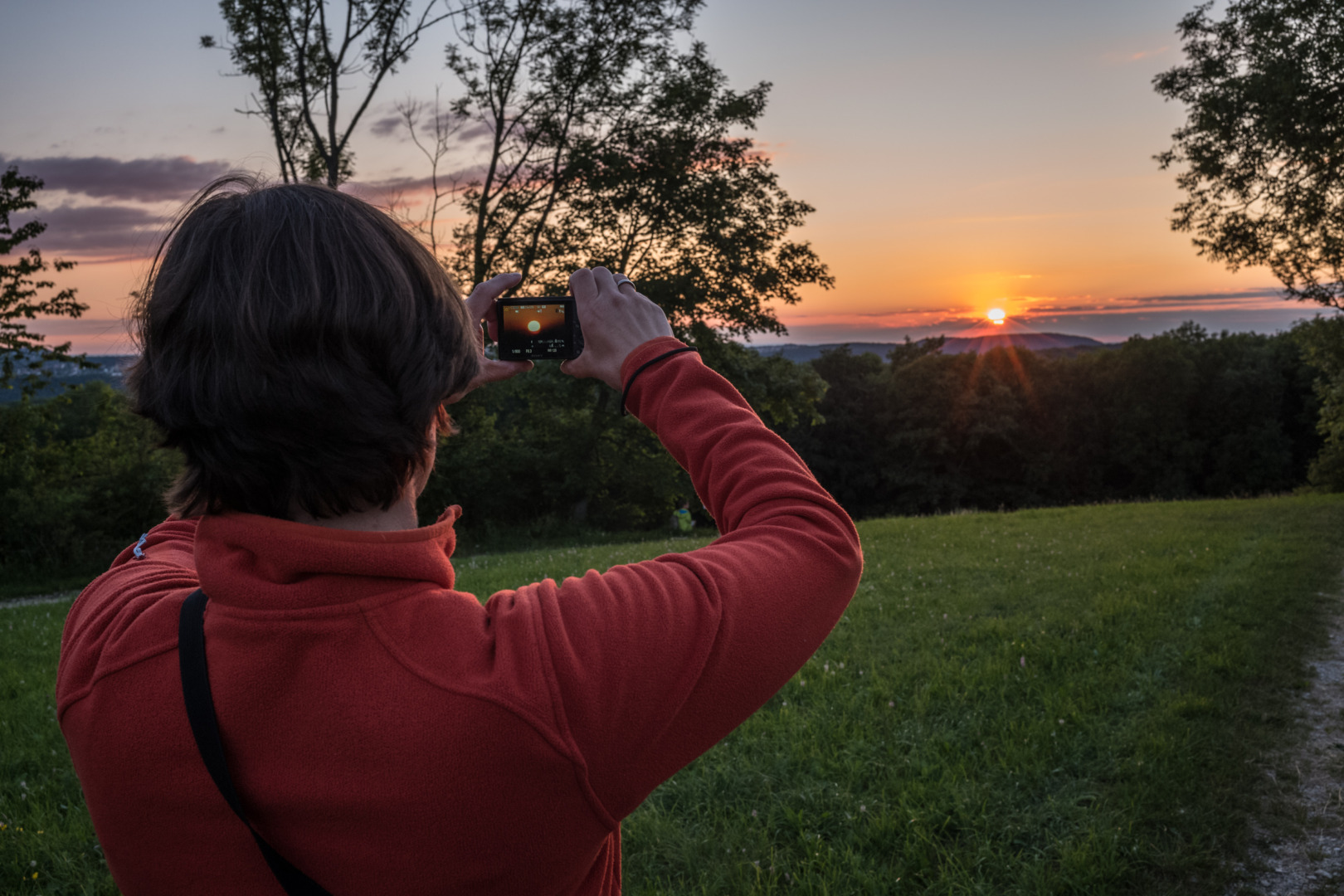

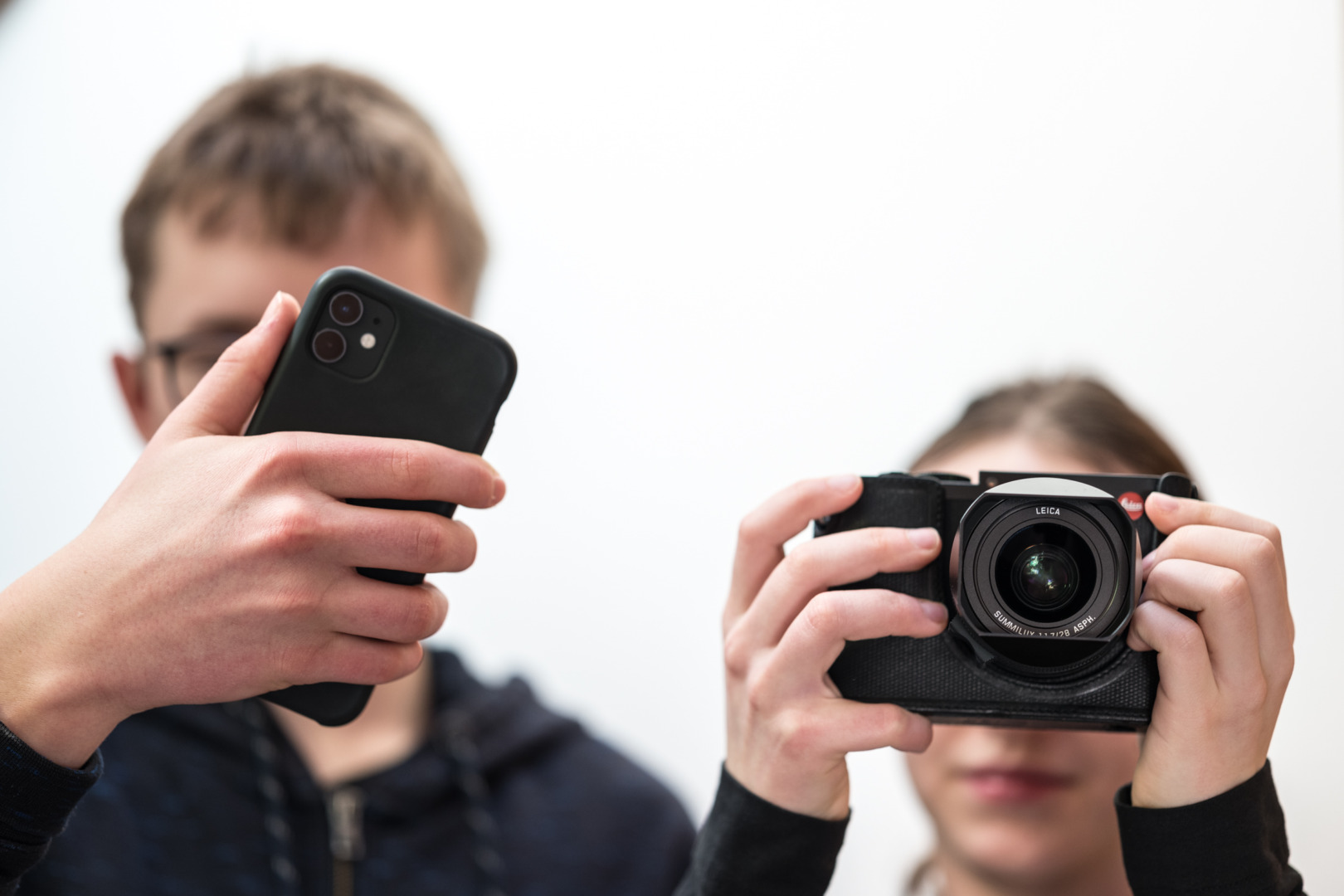





This rather psychological aspect aside, a purpose-built camera has a superior outcome in terms of image quality. Smartphone images are computed to look fine on the (often astonishingly good) screens of smartphones. Rightly so, as the overwhelming majority of these images will never leave the smartphone ecosystem. Once you try to have such a photo printed to a substantial size, you are likely to be disappointed. Not much to be seen of your 12 or 20-megapixels on a modest 8×10 inch print. The extreme miniaturization and the enormous density of pixels on the small sensor are taking their toll.
I was searching for this point. Thank you so much.
Thank you very much for your kind feedback and for sharing the additional info. Perfectly true what you are writing. Smartphone photos look great on smartphones and ugly if printed. Also thanks for adding the point of pixel density. Most significant in my eyes: The largely computational character of smartphone images makes (at the moment) a big difference to phots that were taken with proper cameras. I think, however, these worlds will partially merge with more and more post-processing already inside the camera. Think of the remarkable power which the image-processing engines inside the new cameras have now. JP
Alisa, Jörg-Peter
Last autumn when we got our new work phones, Silas and I tried doing some printing from iPhone 14 pro images. What we found was that (except when taken in extreme circumstances) they were perfectly good printed up to A3 size (16×11).
I don’t believe that pixel density is an issue at all (if we are still to believe the Nyquist frequency arguments of 2015 or thereabouts then there is no point in having a pixel smaller than about 10 micron). But what the argument didn’t include was the advantages of bigger samples.
Modern phones in effect use pixel shift technology to improve resolution (ie lots of samples). But they do this much better and more seamlessly than modern cameras – sometimes dozens of images are combined to make the final image, improving resolution/Noise etc. etc.
These days with Portrait mode they even make a fair crack at the idea of bokeh and subject isolation (even if it’s sometimes a bit odd).
For night photography they do such a wonderful job.
What is also worth bearing in mind is the amount of money which Apple and Samsung, Google etc. can afford to spend on R&D for phone cameras (far outweighing even the revenue of most camera companies).
So, whilst I still use a camera out of preference, there are increasing numbers of situations where a phone does a better job (especially if you don’t want to do lots of post processing).
And if you think prints from phone photos are ugly – I suggest you try again!
All the best
Thanks, Jono. Just out of curiosity: Do you speak of prints from a lab-like process or simple A3 laser or inkjet printer printouts?
Anyway, I have to confess that I did not yet make prints from images that were taken with the very latest iPhones (and other high end devices). So maybe I have to think again. Things are changing at a rapid pace in this sector, and knowing your expertise I have no reason to doubt what you are writing. And indeed, it is more and more the software that makes all the difference. No idea that I particularly like, but it’s matter of fact. So, yes, I will ceratinly try again – and I am curious what we will say about this article of mine in two, five, ten years’ time… JP
I agree with Jono. And I await even better quality in phone pictures. I have an iPhone 11, and my wife has a 14 (I really did not see any improvement in images between these two models), but I await better technology to get closer to what actual photos look like in more than snapshot conditions – tele, wide angle, selective focus at an apparent f/1.4, etc.
That said, the value of any camera is only as good as one having it with one when the need arises to make a photograph. My M10s and their 50 and 35 Apo-Summicron Aspheric lenses are mighty heavy. I try to take one set each time I go out for a walk, or to neighborhood events, or even to peoples’ homes for dinner, but I usually do not take one to the supermarket or to restaurants or shops. Many chain stores greatly dislike customers with cameras hanging off their necks because their decor is proprietary. Yet who knows when that photo opportunity might arise? Pulling an iPhone out of my pocket could suffice, and probably has on occasion. For me the iPhone is still a stopgap, despite improving quality in its images. But yes, I would like a greatly improved iPhone camera, please.
I will still use Leica Ms preferentially as long as I am physically and mentally able. I am so used to their handling that I can usually get a picture when the person next to me is still pulling out his iPhone. And I can capture the humanity of people I photograph better with an M — it just does not seem as intrusive as a phone for some reason. And the image is usually better too.
But both are tools for someone like myself who must take pictures, and I am happy that both exist.
Ed
Dear Kyle,
thank you so much for sharing your thoughts. I could reply pretty much in the same manner as I did to Chuck Allen directly above. I think there are several reasons to shoot film – maybe you want to read some of my other articles that dealt with this topci into more depth.
This one is more related to gear (in this case: rangefinder cameras): https://www.macfilos.com/2022/02/24/gateways-to-heaven-or-at-least-to-a-new-rangefinder-world/.
Here, it’s more about lab work: https://www.macfilos.com/2021/12/24/oops-i-did-it-again-but-is-it-really-a-good-idea-to-develop-your-films-at-home/.
I see no reason to give up film shooting entirely but I am also glad about the opportunities of the digital workflow. I started to work as a (photo)journalist in the 90s and I found it to be a big relief that we could check if we got the image we wanted in situ. With the electronic viewfinders, we can even check our results without taking the camera from our eyes. That is amazing.
All the best, JP
I teach film photography at the high school level. I am an ex commercial photographer who had the opportunity to ride the highpoint of commercial photography in the 90’s. When I tell current photographers about the “good old days of film”, they look at me like an old man and then I tell them that I used to bill $250 an hour. They are lucky to see that for a day today. haha. They don’t believe me, but I still have all of my invoices, so I show them a stack and they near drop dead. Anyway… I tell my students that the camera is a tool. A tool for a person looking to take photography a bit more seriously. A tool to create a photographic footprint that can outlast them. their children, and the “cloud”. I explain that it used to only be a natural disaster that would take your photographs away from you, but now it could be just as easy as an accidental hot swap, or you become delinquent in your extorted cloud payments, or god forbid and EMP or the like. In these uncertain times, a cyber terrorist attack becomes more and more likely, and that should make people think harder about shooting film. When it hits, I will have my photo albums, plenty of film and chemistry to keep those albums going… and 1,000 vinyl records to keep me occupied 🙂
And some old film cameras sell for much more than digital cameras these days. Its not all about money, though, at least for us amateurs. Cameras are tools and, for some, a smartphone is the only photographic tool which they have and need. The part that gets left out of many of these discussions is the nature of ‘publication’ these days and for a lot of that a smartphone does quite nicely. Doing large prints is not important for all but a tiny fraction of both professional and amateur photography these days.
William
About old film cameras, simply supply and demand I guess, they are no longer being made, still the demand persists mainly through YouTube hyping, I personally am surprised that we are not seeing more film camera Kickstarter projects.
I’m probably talking about something else, items that are collected rather than used. The relevant term is ‘rarity’ rather than ‘supply’ and what you call ‘YouTube hyping’ has nothing to do with this. It was Kyle’s references to money that led me to making that comment. It is the same with LPs, some old rare LPS sell for thousands, whereas no CD fetches such amounts. It may be that at some point in the future that the values of digital cameras as collectors’ items may rise considerably, but I doubt if they will reach the peaks of film cameras. In June a 0 Series Leica camera associated with Oskar Barnack goes up for auction and I will be writing about it here. The last two ones, which were sold at auction, went for about 2 million Euros each.
William
Excellent article, thanks for sharing. I couldn’t agree more with your conclusions and concerns about the future of the camera – and photography in general.
It brings to mind something related that I feel is often overlooked – the printing and archive aspect. My wife and I have 4 children who collectively have our 8 grandchildren. Our kids and grandkids seem to derive great joy from regularly looking at ‘old’ print photos we have in shoe boxes, photo albums and the like, just as my wife and I have over the years.
When I suggest they print and save some of the important photographs of their lives (no matter the device used to take the photo), the response is usually something like “Well, they’re in the Cloud, we’ll always be able to print them”. As someone with an extensive technology and computer science background, I remind them that there really is no ‘Cloud’. It’s just someone else’s computer servers, stored – well, no one really knows where.
I fear printing, saving and passing down photos to the next generation seems to be a dying tradition as well.
I’m hoping for the sake of our kids and this current millennial generation, that their ‘Cloud’ will exist in the future and that they will have access to it. I do wonder though.
Mmm ..once the electricity goes out, and when the generators, too, fail, there’ll be no ‘Cloud’. So, family mementoes ..phtttt! ..One big electromagnetic pulse: bye-bye knowledge ..and memories!
I plan to plug in to the Tesla. That’s a huge battery to keep my disk drives going for a week or so…
Quick: fit it with solar panels!..
Dear Chuck, thanks a lot for your kind comment. In part, I agree with you. The twentysomethings firmly believe that digital is real. However, if I look at the even younger generation (my kids are 14), they love “real” photos and go to the drugstore with their mobile phones and print it out. If you saw the photo album my dauther made for me after our summer holiday (photos, drawings, handlettering), you would rejoice. So there is hope. (And I, by the way, take a few rolls of slide film of the familiy every year. It will survive any digital crash). JP
No. If there are increasing sales of vinyl LPs in 2022 ( and there are ) there’s no reason why interest in cameras can’t increase. A phone with no proper grip, no viewfinder and a compromised fixed lens design or digital zoom is not that reason. How long have cameras been on the market? How long have smartphones been on the market? A smartphone is a bit like a Swiss army knife.You can actually cut something with one but it is no replacement for a real knife. Likewise there is no writing on the wall for a wristwatch. Schools, hospitals and other buildings still have clocks on the wall. I wonder why that is? There is no shortage of cameras on sale in the electronic stores of Tokyo even though every Japanese citizen has a smartphone. Why is that?
Thanks, Stephan, for sharing your opinion. I do hope you are right. The question seems to be how big the future niche for cameras is and how many manufacturerers have how much money to develop innovative products. That may be the difference to watches where innvation cycles are comparably slow. The other being that almost nobody under 25 wears a wristwatch nowadays. Because the smartphone doubles as a watch of course. And as to the stores: High supply is not automatically evidence of high demand, is it? JP
The basics of physics will continue to apply to both cameras and smartphones. Basically it comes down to more than the Pixel count, The size of the physical sensor and the pixels has a big affect on the overall creative options that can be obtained.
check out out https://www.cambridgeincolour.com/tutorials/diffraction-photography.htm which has an excellent explanation of how light hitting a sensor reacts. The smartphone has certainly killed off the smaller mass produced compact camera market but the medium and large format camera market will remain. The world of cameras is simply going to become more specialised.
Thanks, David, for sharing this link. Very interesting. JP
Thanks
The point is how a camera will stop being a light capturing box. No way, that’s for flatearthers
OMG Click bait
Actual headline from Pop Photo
126 will kill 35mm
110 will kill 35mm
APS will kill 35mm
No one mentioned Disc probably a good thing
My crystal ball is not perfect but, no matter how good my iPhone is and how often I use it for record or grab shots is is not a replacement for my film or digital Leica M or my Nikon FX and Film SLRS with 300 f2.8 400 f3.5 500mm 1000mm etc.
Oh beautiful sunset hey camera in pocket got it…doe snot diminish other image capture methods
It is a tool. A tool that destroyed the compact 35mm film and digital camera market so what
Mark
The author is very talented but I agree that this is on the margins of click bait.
Especially with the title.
Hi Mark, thanks for your feedback. I do not see click bait in the story or the title. An industry that has lost 90 per cent of its output has an uncertain or endangered future. This and nor more is meant with “writing on the wall”. In the end, it’s all about the question which is the preferred tool, and theses preferences will shape the market. Passionate use of existing or vintage cameras is great but it has no direkt influence neither on camera production figures nor on camera sales revenues. Both however will determine the strategies of the industry, I think. Jörg-Peter
Recently, I have often heard the expression ” I could not take a photo as I did not have my phone with me”. Smartphones are, for most people, the cameras of today and there is no question about that. The main foundation point for this, which I have made here many times here is how photography is ‘consumed’ today. It is mostly consumed online on small screens using social media. Digital photography and social media combined have increased the disposable aspect of imagery, which is now largely ‘here today and gone tomorrow’. The important element in creating what people want is the combined communications function which allows your favourite auntie in Australia to see what you are having for dinner before you have finished it.
For most people, stand alone cameras with all of their downloading and post processing cannot live with that competition, except for people who want very high quality images to ogle or print. There are still chaps (they usually are chaps) who want to make prints the size of barn doors. For many people the reaction to that is, why?
To David B’s point about separation, I have a Huawei phone with a ‘Leica’ lens which has an f 0.95 setting which provides a passable imitation at extreme separation, all created electronically, of course. My iPhone is not nearly as good at separation.
I use both smartphones and ‘real cameras’ to take photos. In the case of the latter, as well as the better image quality, I like the tactile experience, particularly with vintage cameras. However, if I want to share a photo with someone else, the smartphone wins hands down.
William
Thanks, William, as always for sharing your well thought out insight. I agree that there is no either-or from the photographer’s perspective. Smartphones are excellent tools for the images you call disposable (great word for this) or, as I would say, fugitive. If an image is meant to stay within the smartphone ecosystem (maybe a bit post processed on a smartphone, shared via smartphone, viewed on a smartphone) it absolutely reasonable to shoot it with a smartphone right away. What I hope for ist that the number of people who use standalone cameras remains high enough to keep the industry and the competition therein going. Otherwise we, the camera users, might be the losers of this change one day. JP
Amen.
Case in point, my 36 and 40 year old offspring. Zero chance they will fiddle around with memory cards and software. If the image can’t be sent instantly, it’s dead anyway, they have moved on. They will NOT carry around the bulk of a ‘real’ camera.
My phone pics are all receipts, parking meters, product serial numbers (theft!), etc. Nary a sunset anywhere. Maybe an occasional insect. Ergonomically, it’s a terrible photo platform. Fingers are always in photos. My daughter doesn’t snap one pic of something- she does the time lapse (or other shotgun mode) and then picks one. Don’t have to compose, just press the button and kind of point it in the general direction. I’m not sure she deletes the ones she doesn’t forward- takes too long. She just buys a lot of cloud storage! Ditto for my son and his contemporaries.
I’ve had 20 somethings come up to me and ask me if this thing around my neck was a camera. Let me repeat that- the query was NOT the brand of camera, but was it ACTUALLY a camera? Could they hold it? Sure, but as soon as I handed it to them, the weight was a dealbreaker. It’s happened with my SL2 and Q2, and even the size of the Q2 was a non-starter.
One high school photo student asked me what all the numbers were on the (M) lens (when I had my M10-P). When I mentioned f numbers and depth of field, they glazed over. Sadly, this has happened more than once, and they were PHOTO students!
Print something? What’s a printer?
If camera’s have to do one thing to appeal to the the newer crowd, it’s the instantaneous share. Without that, I think time is limited. If a camera manufacturer can figure out a way to get the camera on cellular, they might have a chance. And no, Leica Photos won’t do it.
Personally, I cannot believe someone does not have their smart phone with them and cannot take a photo. Seriously? Everywhere I look relationships and being in the moment are going down the toilet as people stare at their phone and steadily diminish their IQ as well.
Anyway, my view is, camera and glass sales will drop to film days where people that are really serious about photography will invest in cameras and glass. I got off facebook because people thought I might be interested in a poorly taken photo of their fast food lunch and a pathetic self absorbed selfie. Seriously, why have the suicide levels gone through the roof? A study does not need to be done on the current superficiality of society sharing their self absorbed lives via a smartphone.
Hi William, cameras will live on. Their market will never be the smart phone people. Hopefully, the product managers understand the shrinking market.
In the film days, which you are familiar with, we did not have the constant release of new cameras and so many lenses coming out. The market will shrink to serious enthusiasts and professionals, like the film days if you remove the point and shoot market that has been removed by the smartphone.
I am not worried about the future of serious photography or silly Huaweii phones that really cannot replicate a real photo.
Brian, as someone with about 60 cameras they will be around in my house until I depart. Then my family will have the task of disposing of them. I’m not particularly excited when a new digital camera appears and the manic upgrade cycles by camera manufacturers seem to be extending to more sustainable levels.
As someone with arthritic 72 year old hands the handling on a smartphone is not really for me, but I usually always have a smartphone with me. I only bring a camera when I am going to a location with good photographic material. I have heard the expression about not having a phone to take a photo. I mentioned it to illustrate that for most people these days their camera is a phone.
William
With the radical changes taking place in the world, with worse to come, many existing owners of cameras and smartphones will be making do with what they have. Replacing or upgrading expensive new smartphones or conventional cameras will quickly cease to be an option, I am afraid. Priorities will change as populations shift around the world and economic survival drives purchasing decisions. Thankfully, I have all that I need in the subject area, with quite a bit of redundancy built into my inventory.
Sadly true, David. When compiling this article, researching all the figures and making up my mind in order to give a halfway intelligent assessment I would not have thought into what world the text would be published. I decided to submit it anyway and be it only for a bit of distraction for the fabulous Macfilos readership. But I agree, many of us might have very different issues to settle in the future. Let’s hope the best. JP
To answer your last question Joerg-Peter, I think my X2, which is in Wetzlar for repair at the moment, may well be my last camera with my Ricoh GXR. Both cover all my needs and their raw files are a pleasure to work with.
And your results a joy to look at!
I think you have said it all Joerg-Peter. A 90% decline in camera sales in the last decade? It doesn’t surprise me. We are already in the new reality. The change has taken place.
So the lower specification cameras have been largely replaced by smartphones? Good. They are better tools. In my opinion the manufacturers of medium spec cameras eat each other’s, and over eat their, lunch. I was always bemused by companies bringing out ‘new’ models with small variations in specification within a relatively short period from the previous model. Why buy a particular model when soon there would be a better one or the same could be bought used? I’m glad that period is – I hope – over. The higher spec cameras continue to improve. Even better.
So we have in our smartphone a tool to take and quickly share snaps to communicate with family, friends or a news agency. And higher quality cameras to pursue a craft, either as work or hobby, with the ability to tell a story better and a product that can be manipulated and printed. Given the inherent flat shape of a smartphone there will be physical limits to what they can achieve photographically. So when other results are wanted a dedicated camera, be it film, plate or electronic sensor based, will be required.
Lastly I think the smartphone sales figures tend to be misleading. The inability of older models to handle new software updates forces people to buy new phones. And telecoms companies’ contracts lead to changes in phone every few years. It’s not a question of replacing one camera with one phone, the sales are not either/or although you didn’t suggest that.
Anyway thanks for this very thought provoking piece.
Fair point at the end Kevin – we junk our phones every 2-3 years, I tread to think how wasteful this is to keep our technology companies in coin. I also replace when discounts are at a premium – so buy the outgoing IPhone, as the new one arrives – happens every September(ish) time. I tend to pick up the last gen, after the new gen launches and the phone companies are trying to offload dead stock. Has worked a treat for the last three upgrades.
Excellent comment, Kevin, thank you very much. I do not want to add more but let me clarify this one: I never meant that a single smartphone purchase replaces a camera purchase. These are two every different markets as Dave correctly writes. And taking pictures is only one application for the smartphone, but it has become the standard tool for everyday photography for sure. However, the figures are clearly showing the priorietes people have and where the money goes to. JP
Mobile phone photography brought me back to photography about 18 months ago. My phone – a Google Pixel 3a – opened up the medium and allowed me to create a workflow that I had previously missed in my first experience with a camera. This led me to buy a second hand camera and lens, and continue my new found workflow with a decent camera. I can’t speak for anyone else, but it seems to me that photography with a dedicated camera is a flourishing business. Mirrorless is taking over from D/SLR, and more and more folk are finding creativity using cameras over smartphones. Yes, smartphones make up a huge usage number, purely from being on a phone held in everyone’s pocket, but they are not a replacement for a half decent camera. They run alongside as a useful tool, but that’s it. This however – by and large -works fine for your average user, but the days of the dedicated camera being killed off any day soon is a long way off.
Your story supports my long-held theory that smartphones are creating interest in photography and, far from killing off the camera, are attracting more people to try their hands with what they perceive as an advanced means of taking pictures. The high price of smartphones makes today’s invariably expensive cameras more palatable. Yes, smartphones have killed off the cheap point-and-shoot market, but they are enhancing the appeal of more expensive modern cameras.
That’s great to hear, Carlos, and I hope you will have great lot fun with your camera. I hope you and Mike are right. The sales figures have been telling a different story over the last five or so years, and second hand buying will not help the manufacturers today directly. We’ll see. Not all is lost for sure, the industry was on speed in the first decade of the digitalization of photography. Maybe we are not seing more than a new normal when it comes to the camera market. JP
Cracking debate, and opens up a conscious decision among many of us, and for many our phones are good enough. In the main, I still prefer a camera, the feeling of seeing the image, dialling it in, and the satisfaction of seeing it in post production. The phone can do some amazing things, and is better than my first point and click digital, but it still lacks the control layer we have for those magical moments.
Just to add, today I stood in my local John Lewis electrical department – and spotted the camera stands – what used to be ranks of models, is now two lines of a very limited range, many discounted – perhaps we have fallen out of love with the classical camera, in favour of the one in our hand most of the time. Sad, as only those of us who use them will understand the difference.
In the end, Dave, it’s the market that decides. If ma vast majority of customers want no more real cameras they will not ne offered (and, in consequence, not be developed, not be produced, not be marketed). And if they do not know what they miss they will feel no lacking of anything. If you have never heard a Beethoven symphony you can be very happy for your whole life… but if you have you might be lost to Beethoven or classical music in general forever. And: people who love Beethoven are no better humans than people who don’t… JP
A very interesting perspective JP – and I totally get it.
What I didn’t spot in the gaps in the shelves was a high end DSLR, or a Leica, or a high end Mirrorless – or a top end Fuji – which to me suggests the market many of us wade in, is still viable for now – as John Lewis does provide for the masses, and the specialists. Plus it sells what for it is profitable.
I suspect for a decade or so – we may be okay for new camera tech – but perhaps the R&D arc will slow a little, with models released on slightly longer timelines. Personally I see this as a positive, as I save for the next bit of gear I want. But for the companies will mean needing to restructure around a slightly lower return for tech input.
It will be very interesting to see how it pans out, that for sure will give us miles of writing, and plenty of opportunity to showcase the benefits of the camera’s we own.
A very well thought article Joerg-Peter! I love my cameras, and I hate taking pictures with my smartphone, exactly because of the reasons you quote. I still jeep my Pentax ks1 because I love its optical reflex viewfinder, even thought its lenses are just so-so. However we are clearly a shrinking community.
Quite right, Andrea,
taking pictures with a real camera is so much more fun. And my father always said: “Nur was man gerne macht, macht man gut, und nur was man gut macht, macht man gerne.” (“Only what you like to do, you do well, and only what you do well, you like to do.”) In so far, a camera that you like as a tood might guide you the path to better pictures. There is no guarantee for sure, but a likelihood.
Dropping camera sales by the way are no direct proof of a shrinking community. It could also be that cameras are used for a longer time because innovation cycles have slowed down already, and cameras have become so expensive that most people can’t replace them by something new so frequently.
JP
I think you might want to define who might want to own a camera based on two criteria:
“I believe I am an visual artist who wants an outlet for my skills, that doesn’t include me drawing or painting.”
“I like mastering craft skills that make me feel accomplished and that I can demonstrate/share with others.”
You can test that hypothesis by asking current photographers if they agree/strongly agree or not. If they agree, ask non camera owners but mobile camera phone users if they agree/disagree with both statements and how as a consequence do they express themselves artistically or through which craft skills.
There’s much that can be learned from something as simple as this.
Good point, Le Chef. We both know the answers of today’s image taking persons. The question is however if there will be photographers tomorrow and if so (what I am convinced of) what they might answer. JP
Cameras won’t be replaced in a near future. It will probably be a niche market but I can’t think of of a reporter going to to cover a conflict or a wedding photographer you’ve hired to have pictures of the wedding wih a couple of smartphones to do the job. Cameras are wonderful tools that can’t be replaced by phones. I remember Panasonic did try with their phone with a Leica lens but it wasn’t a success. The Leica TLs series provide an add-on EVF even if the menu layout is inspired by smartphones.
Although phone technology develops fast a smartphone with a viewfinder a large sensor and interchangeable lenses won’t appear in the decades to come
Thanks for a great write up
Jean
I agree Jean – the phone is developing exponentially and has clearly caught up with, if not surpassed the point and click market.
However I look at my images caught on either of the Df, or the X – and then study the test shots I did on my IPhone – trust me the camera taken images are considerably better than my IPhone shots.
In saying that my third highest liked image on flickr is an IPhone shot, which is a canvas on my dining room wall. I like it, it is unique and sells a moment in time – but I still prefer my camera work over my phone stuff.
The phone has a place in the world, it introduces the masses to photography – those who want to explore this further will potentially fall into buying a real camera – and the rest will post on social media regardless of quality.
Absolutely true, Dave. Smartphone photos often have a ceratin flatness or artificality. Which does not change that the best camera is always the one you have with you. If the trend to take ever more photos of ever more meaningless things/situations will really bring a substantial amount of new customers to the camera industry remains to be seen. I hope so – because without them we will probably not see any substantial success anymore. I personally could do without by the way. The cameras we have in 2022 are good enough for sure. But that’s just what I think, nobody has to agree. Best, JP
I hope so to JP – it would be a cruelly sparse world without decent camera’s, and with us relying on ancient stock and parts to keep them going. The Phone still has a gap to cover before it can be your sole camera of choice for an event, or professionally paid gig – it has not totally eclipsed this bit yet. But I suspect there will be less brands in the future – and survival of those that remain will be interesting.
That’s hard to image, Jean, I fully agree. A wedding photographer, hired for a lot of money, with three iPhones on necklaces. Maybe there will be two product lines for a long time. The question is what happens to the camera industry when sales have fallen under a critical level. There will be no more funds for R&D, and cameras will go the way of the fabulous MiniDisc, or the combustion engine which is, per se, an excellent technology but prone to extinction. Thanks for your feedback und I am looking forward to your next comments. JP
Or the trend to analog / film will finf an excellent revival.
Many thanks for the super publication and the comments of all the photographers.
After reading all this, i came to the conclusion, that i should not only prepare my taking the photos but even more to make someting out of it, print it, show it and publish it. Take time for this and go not for “shooting”.
.
Now i found it: tell a story not just take a photo, hopefully a nice one
Dear J Schmid,
thank you very much for your contribution to this discussion. I’m glad to read that you liked the article, and, indeed, often the comments are at least as interesting here on Macfilos as the stories themselves. And I couldn’t agree more – photography is a social thing, images unfold their power in the moment they are being shared. I wish you all the luck with your storytelling – in whatever form and medium you want to start with.
JP
PS: You might be quite right with your thoughts on analog. The demand for films is higher right now that at any point during the last ten years at least. Leica released a new film camera, and form all I here, we might see more new film cameras in the future!
It’s all very well to write (or talk) about ‘photography’ in general, but this doesn’t address the difference between what a ‘smartphone’ photo looks like – almost everything in sharp focus, unless what you’re shooting is very close – and what a ‘camera’ photo can look like: with the appropriate lens, or aperture, and only one distance in sharp focus, and everything else blurred ..to draw attention to just one thing or person.
Zooms on smartphones (or multiple lenses) don’t presently achieve the separation between objects, or people, in photos which dedicated cameras+lenses still presently do.
But not enough people notice those differences to get them interested in how to achieve that separation (..just as not many people notice the typeface of some text or other, and don’t realise that their attention may have been caught by the typeface rather than by the content. Who bothers specifying a particular typeface when simply writing an ordinary letter?)
People are often unaware of what they’re looking at. I see so many people using a flash – if they’re still using a point-&-shoot – when they shoot a sunset ..when I’m teaching photography. They don’t give a thought to the sun being the source of the coloured light they’re trying to catch, and that the sun’s 93 or 94 million miles away ..so is their flash going to have any effect on the photo?
Products (phones) are advertised as taking great pictures, so people buy them and are happy with the photos they get. If a chocolate éclair were advertised as ‘taking great photos’ people would buy them and expect to take pictures with one.
People – to my mind – believe with actually thinking.
..That should be “..believe without actually thinking.
(Sorry; was rushing to get to the table in time for lunch!)
Hi David, well written except I suspect your last sentence is missing the word “without”.
I see so many pictures that the smartphone 28mm equivalent is just not right for. So many photos have facial features looking wrong – especially selfies. That is one of the reasons I sold my Leica Q as a cropped 28mm still looks like a 28mm was used.
I do see great pictures taken by smartphones but only in skilled hands in general. I used to be a member of 2 camera clubs more than ten years ago but I quit as the vast majority kept upgrading their cameras and buying expensive lenses so their poor images would improve. They usually shot in P mode and one would always proudly say that meant Professional mode.
I never use a smartphone as I need a viewfinder to see what I am taking. My daughter takes lots of happy snaps of her kids with the smartphone but far too often the 28mm look is wrong. However, she is happy so that is fine.
It is unfortunate that most people will buy a lot of expensive equipment but will not invest in even education on even the basics of photography. The AI of todays cameras has done a lot of damage to photography as it has removed any need for learning the basics and then zooms have compounded the problem in so many ways.
Hi David, your correction appeared after I finished my comment
Excellent point, Brian. Far too often, even the most basic skills and knowledge are missing. In the olden days you would not have taken a photo when lacking these prerequisites. Today, everybody thinks he or she is a great photographer only because they have tool to take images with. The result is that ever more pictures are being made but the number of excellent images not by far raising in the same proportion. You would not believe what people seriously send to my newsroom with the idea that this could be an image for publication. So yes, there is, quite paradoxically, much need for spreading basic knowledge, and unfortunately most people prefer to invest in things instead of persons (themselves, their education, their teachers…) JP
Fully agree, David, thanks a lot for your comment. I think cameras give far more room for creativity, but the sirens of marketing are seductive. In the end, everyone might use what they find appropriate. What does not answer the question what is going to happen to the camera industry once the business volume has shrunk under a critical limit. JP